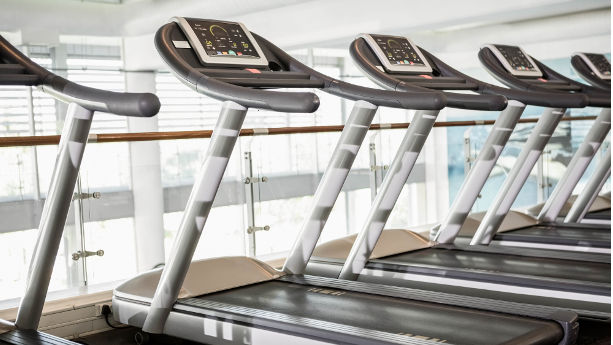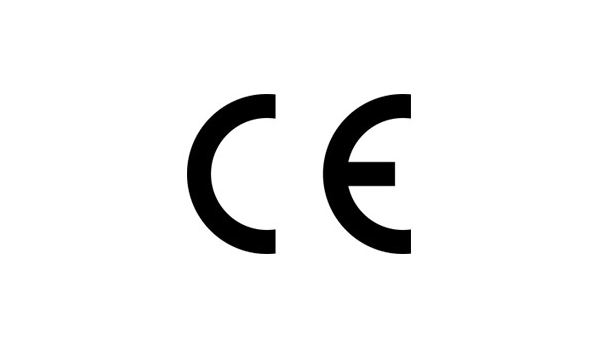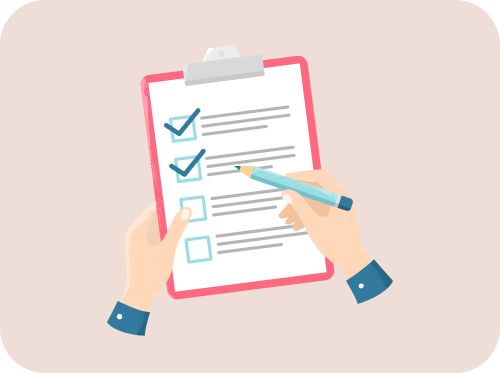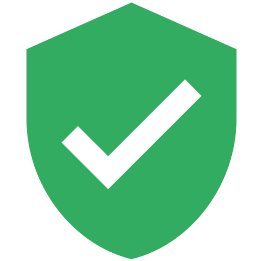
The Machinery Directive applies to machines manufactured or imported to the European Union. More specifically, it defines machinery as assemblies of movable parts. As such, it applies to everything from treadmills to dishwashers.
Keep reading, and learn what European importers must know about safety standards, CE marking, documentation, and lab testing requirements related to the Machinery Directive.
Content Overview

FREE CONSULTATION CALL (30 MIN)
 Ask questions about compliance requirements
Ask questions about compliance requirements Countries/markets:
Countries/markets:
 Learn how we can help your business
Learn how we can help your business
You will speak with:Ivan Malloci or John Vinod Khiatani
What is the Machinery Directive?
The Machinery Directive provides technical requirements for a wide range of machinery manufactured, imported, or sold into the EU, in terms of design, installation, and safety of the user. Also, the directive covers the conformity assessment procedure:
1. A list of harmonized standards that might help to comply with the technical requirements
2. Documentation requirements, such as the technical file, instruction manual, or Declaration of Conformity
3. Labeling requirements, such as the CE marking or traceability information
If you are planning to import equipment that is covered by the Machinery Directive into the EU, you shall ensure compliance with all the necessary requirements.
Products covered by the Machinery Directive
To start with, importers shall determine whether their equipment is covered by the Machinery Directive. Article 2 of the Directive defines what can be considered a “machinery”, including:
a. An assembly that includes, or intends to include, a drive system (except human or animal effort), consisting of linked parts or components, at least one of which moves
b. An assembly of linked parts or components that might move and are joined together, intended for lifting loads via applied human force;
Below we provide some examples of covered and excluded products, for your reference.
Covered Product
- E-bikes
- Treadmills
- Commercial dishwashers
- Commercial washing machines
- Interchangeable equipment
- Safety components
- Lifting accessories
- Emergency stop devices
Excluded Products
- Household appliances for domestic use
- Electric motors
- High-voltage electrical equipment (e.g switchgear and transformers)
- Audio and video equipment
- Information technology equipment (e.g. printers and scanners)
EN Standards
Machinery shall be manufactured and imported in conformity with the technical requirements provided by the Machinery Directive.
When possible, it’s generally more convenient to follow relevant harmonized standards (EN standards) in order to comply with requirements that apply to your product. Below, we list and briefly explain some harmonized EN standards for your reference.
EN 1093 – Safety of machinery – Evaluation of the emission of airborne hazardous substances
EN 1093 provides guidelines for pollutants emission from the machines. It specifies parameters that can be used for pollutant assessments and the performance of pollutant control systems. It also lists the pollutant requirement under the Machinery Directive and related testing methods.
EN 13478 – Safety of machinery – Fire prevention and protection
EN 13478 focuses on the fire safety of machinery as it specifies the technical measures for fire prevention and protection. This standard establishes the requirements for hazard identification such as oxidizers and combustible materials, and also requirements for risk assessment.
EN 1837 – Safety of machinery – Integral lighting of machines
EN 1837 specifies the requirements of integral lighting systems designed for illumination, including material requirements, operating requirements, and design requirements. It also provides test methods for resistance, flow rate, and pressure.
EN ISO 3743 – Acoustics – Determination of sound power levels of noise sources
EN ISO 3743 concerns the sound level and sound energy emitted by machinery. It is suitable for all types o noise including steady, non-steady, and in fluctuating noises.
EN ISO 13850 – Safety of machinery – Emergency stop
EN ISO 13850 specifies functional requirements and design principles for emergency stop devices. The standard includes safety requirements such as operating conditions, the user of wires or ropes, and the prevention of unintended actuation.
EN ISO 20643 – Mechanical vibration – Handheld and hand-guided machinery
EN ISO 20643 focuses on the mechanical vibration of hand-held and hand-guided machinery. It specifies the instrumentation requirement and hand-transmitted vibration emission of the equipment. Also, you can find the testing methods and the operating conditions for the equipment.
You can find more harmonized standards under the Machinery directive on the EU official website.
Documentation
In this section, we explain what are the documentation requirements when importing machinery equipment to the EU. In general, importers shall have these documents ready before the importation for authorities review.
EC Declaration of Conformity of the Machinery
The Declaration of Conformity must contain information such as:
1. The manufacturer, importer, or Authorized Representative name and address
2. The name and address of the authorized person who compiled the technical file
3. The machinery’s description and identification
4. A Declaration stating that the machinery complies with all the requirements of the Directive
5. Identification number of the Notified Body (if any)
6. Applicable harmonized standards
7. Place and date of the declaration
8. Signature
It is also important to include other applicable directives on the DoC as it is the primary documents for authorities review. Keep in mind that the DoC should also be supported by test reports.
Instruction Manual
The Machinery Directive explains what content shall be included in the instruction manual.
Here are some of the information that shall be included:
1. Business name and full address of the importer or, when relevant, the European Authorized Representative
2. Designation and description of the machinery, including the CE Marking
3. The Declaration of Conformity
4. Drawings, diagrams, descriptions, and explanations for the use, maintenance, and repair of the machinery
5. Description of the intended use of the machinery, including relevant warnings
6. Airborne noise emissions
Manufacturers and importers can find the details of what information shall be included in the instruction manual in the “Annex I – Contents of the instructions” of the directive.
Technical File
Before placing the machine on the market, manufacturers or and importers shall also issue the technical file. Annex VII of the directive sets the technical file requirement, including the following:
1. General description of the machinery
2. Drawings of the machinery
3. Risk assessment
4. Applicable safety requirements
5. Test reports
6. Copy of the instruction for the machinery
7. Copy of the Declaration of Conformity
Test Report
Test reports demonstrate compliance with the relevant harmonized standards and the technical requirements specified in the Declaration of Conformity and the technical file. Manufacturers and importers shall then contact a reputable lab testing company to discuss the necessary testing procedure.
Several companies, including Intertek and TUV, offer testing services based on applicable EN standards. Testing companies can also help you assess which standards apply to your specific product.
EC Type-examination Certificate
For some classes of products, the procedure for assessing the conformity of machinery might also require the involvement of a Notified Body. In particular, for all products listed in Annex IV, the following procedures shall be evaluated:
1. If the machinery is manufactured in accordance with relevant harmonized standards, and such standards cover all relevant technical requirements, then a Notified Body involvement is not compulsory.
2. If the machinery was not manufactured in accordance with the relevant harmonized standards, or the existent standards do not fully cover all the technical requirements prescribed by the Directive, then the EC type-examination procedure, which requires the involvement of a Notified Body, shall be applied.
In an alternative to the EC type-examination procedure, a manufacturer can also choose to use a full quality assurance system, which shall be assessed, approved, and monitored by a Notified Body as well.
Here some examples of products listed in Annex IV of the directive:
- Circular saws
- Portable woodworking chainsaws
- Injection molding machinery
- Vehicle servicing lifts
Therefore, when necessary, manufacturers and importers shall appoint a Notified Body of their choice to carry out the EC type-examination procedure. The Notified Body shall examine the technical file, and perform relevant inspections, measurements, and tests to ensure that the equipment has been designed in compliance with the requirements of the directive.
If the equipment satisfies the provisions of the Machinery Directive, then the Notified Body shall issue an EC type-examination certificate.
The certificate shall include the following information:
- Name and address of the manufacturer or importer
- The approved equipment type
- The conclusion of the examinations
Note that the Notified Body and manufacturer – or importer, – shall retain a copy for a period of 15 years from the date of issue.
Authorized Representative
Manufacturers or importers can also appoint a European Authorized Representative (EU Rep) to perform specific tasks and obligations under the Machinery Directive.
Notice that if your company is based in a non-EU country, then you must appoint EU Rep for the conformity process. In general, an EU Rep shall help you with the followings:
- Assist in conformity assessment
- Retain the technical documentation
- Act as the main contact person in the EU
There are companies that offer EU Rep services, such as Qserve, Emergo, and Obelis. You can contact one of these companies to learn more.
Labeling Requirements
CE Marking

The Machinery Directive is a CE directive. Therefore, manufacturers and importers must also comply with the CE marking requirements for their machinery. The CE marking shall be affixed in the machinery in a visibly, legibly, and indelibly way, and in the user manual, according to the dimensions, colors, and other requirements explained in the Directive.
Notice that the CE marking is only used to indicate that the products have met the requirements. That said, you shall still ensure that you have fulfilled the other relevant requirements before you can affix the CE mark.
Product Traceability
Importers shall ensure the traceability of a product throughout the whole supply chain, in order to facilitate market surveillance, recalls, and other necessary actions. The machinery shall have a label with at least the following information
- Manufacturer or Importer business name
- Manufacturer or Importer postal address
- The serial number of the machinery, if any
The label must be permanently and visibly affixed on the equipment, and it shall be available in the documentation such as user manual and packaging as well.
Machinery information and indications
The Directive requires machinery to have signs and instructions concerning the use, adjustment, and maintenance. The signs must be clearly visible and indelible and include information such as:
- Nominal power expressed in kilowatts (kW)
- Mass of the most usual configuration, in kilograms (kg)
- Vibrations transmitted by the machinery to the user’s body
- Operating Instructions
- Maintenance instructions
Lab Testing
The Machinery Directive also provides different testing requirements for mechanical strength, lifting components, control of movements, and loading control.
Importers and manufacturers usually do not have the ability to carry out the required test, therefore, they shall seek help from professional testing laboratories such as:
- Intertek
- TUV SUD
- F2labs
- Eurofins
These testing companies offer machinery testing, inspection, and certification services according to the Machinery Directive.
Compliance Risks
Machinery produced outside the European Union is not by default designed to comply with the EU Machinery Directive. Suppliers primarily manufacturing machines for domestic sales, or exports to other countries and markets generally don’t ensure compliance with the machinery directive. Importing and selling such machines is illegal, and can result in major fines.
It’s therefore essential to verify if the type of machine you intend to import to the EU is compliant with the machinery directive. We recommend that you request the following documentation from a prospective supplier:
- Declaration of Conformity
- Lab test reports
- User manual
- Label photocopies
























.png)
.png)
.png)


Hi, is there an equivalent of Machinery Directive which is applicable in the Korean market?